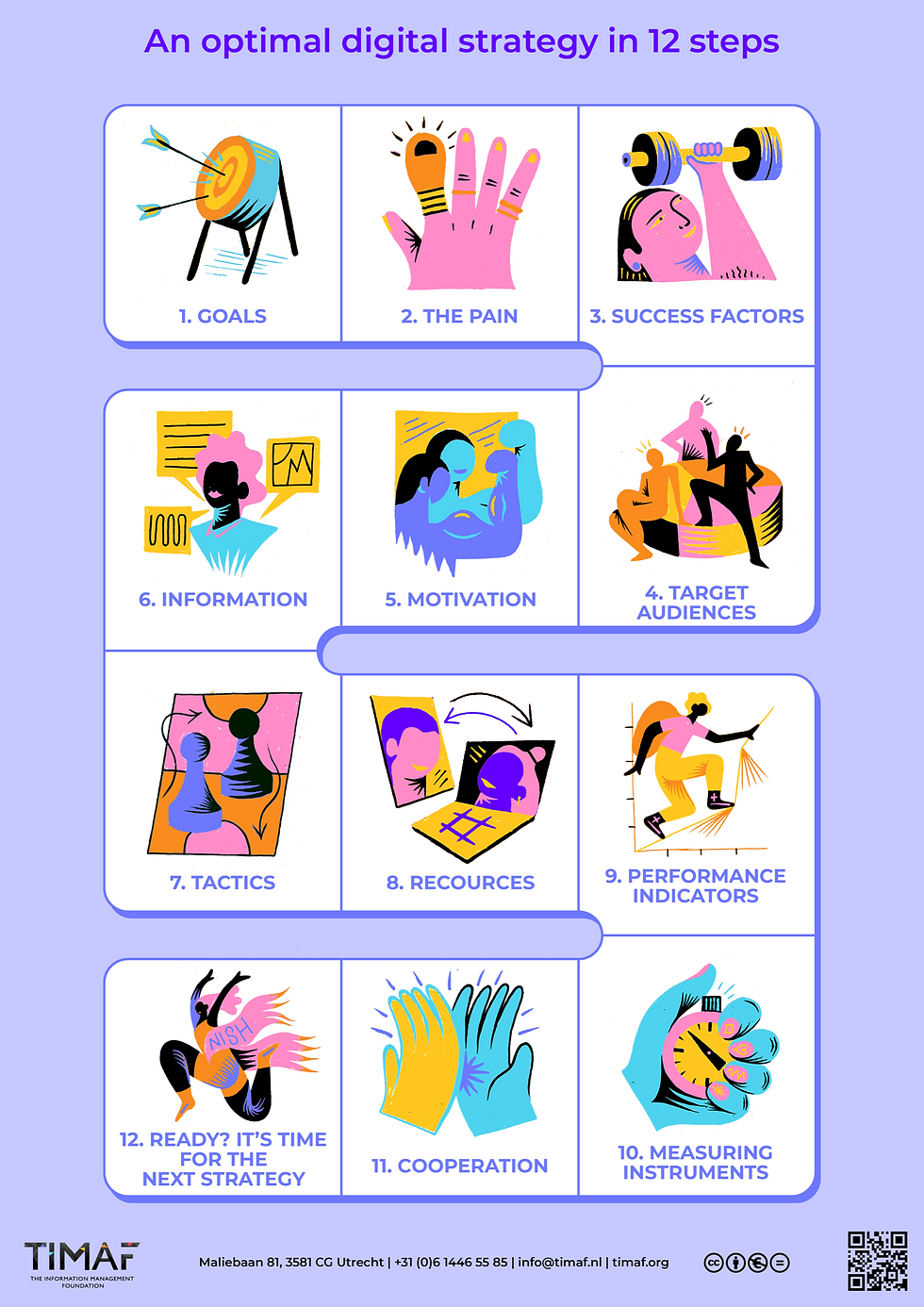In a world increasingly driven by technology and data, formulating a digital strategy is essential for organisations that want to grow and stay competitive. But a strategy without measurable indicators is like a ship without a compass: you may know where you want to go, but you have no idea if you're actually on course.

Measurable indicators (also called KPIs - Key Performance Indicators - or OKR - Organisation Key Results) are essential for measuring and improving a digital strategy. I previously wrote about the three key elements of a strategy:
A diagnosis of the problem.
A guiding policy to solve this problem.
A set of coherent actions.
Measurable indicators help to measure and improve the strategy. As far as I am concerned, this makes them the fourth core element of a strategy.
Why are measurable indicators important?
A digital strategy without measurable indicators is a “paper tiger. It looks impressive on paper, but in practice such a strategy is purposeless. I know from experience how difficult it is for organisations to define measurable indicators.
People are unfamiliar with this phenomenon, it is also confrontational and there is a fear of committing to concrete results. But I like to help organisations bite through that sour apple. Because the benefits of measurable indicators speak for themselves.
1. Clarity about success - Defining measurable indicators makes your goals concrete. Vague goals like “more website visitors” or “improved customer satisfaction” are difficult to translate into action. KPIs such as “10% more organic traffic within six months” or “achieve an NPS score of 8+ within a year” make it clear when you are successful.
2. Focus and priority - KPIs allow you to focus your efforts on what really matters. They help you determine which activities have the most impact on your goals and prevent you from getting lost in less important tasks.
3. Data-driven decision-making - Measurable indicators allow you to make objective decisions. Instead of relying on gut feelings or assumptions, you can use data to refine and optimize strategies.
4. Accountability and transparency - KPIs make it easier to communicate the progress of your digital strategy to stakeholders, such as the management team or external partners. They provide transparency and show that you are focused on results.
How do you formulate effective KPIs?
A good KPI is SMART. This acronym stands for a method of formulating goals and indicators in a clear and structured way. Each of the letters in SMART represents a characteristic that a target must have to be effective.
Specific - What exactly do you want to achieve?
Measurable - How will you measure progress?
Acceptable - Is the KPI realistic within your organisation?
Relevant - Does the KPI contribute directly to your objectives?
Time-bound - Within what time do you want to achieve this result?
For example: instead of saying “we want more website traffic,” you can formulate a SMART KPI such as: “We want to increase organic traffic on our website by 20% within six months.”
Examples of KPIs in a digital strategy
I provide some examples of KPIs in a digital strategy:
Website performance - Average session duration, bounce rate, number of unique visitors.
Social media - Growth of followers, engagement rate, number of leads through social media channels.
Email marketing - Open rate, click-through rate, conversion rate.
Conversion optimisation - Number of conversions, value of average orders, ROI (return on investment) of campaigns.
Measuring for insight and optimisation
The success of a digital strategy depends heavily on the ability to measure and drive results. Measurable indicators not only provide insight into the performance of your strategy, but also allow you to make targeted adjustments and achieve maximum impact.
So, before you get started implementing new digital tools or campaigns, make sure you have a clear understanding of which KPIs define your success. After all, measuring is knowing - and knowing is growing.
Have you already formulated measurable indicators for your digital strategy? Share your experiences in the comments!
New book: 'Strategy in digital transformation'.
You can find more explanations and examples of the core elements of a strategy in my new book “Strategy in Digital Transformation. The e-book will be published in 2025 and later the paper version.

This will be a read and do book that will help you successfully create, share, execute, measure and optimise digital strategies.
In each case, you will find the TIMAF strategy game, 10 worked out examples and many exercises. With the poster digital strategy and game cards, it becomes a real do-book.
The idea is that, based on the book, you can get started creating a digital strategy yourself.
Create a digital strategy in 12 steps
A digital strategy is a preconceived plan that identifies how the organisation can
better achieve organisational goals with the optimal use of digital assets.
To help organisations with their digital strategy, TIMAF developed the digital strategy game that allows you to create a digital strategy in 12 steps.
You can apply this game directly in a workshop with colleagues, customers and suppliers.
The 12 steps of the digital strategy game are brought together on a poster.
You can request the free poster Digital Strategy and share it with your colleagues.



Comments